
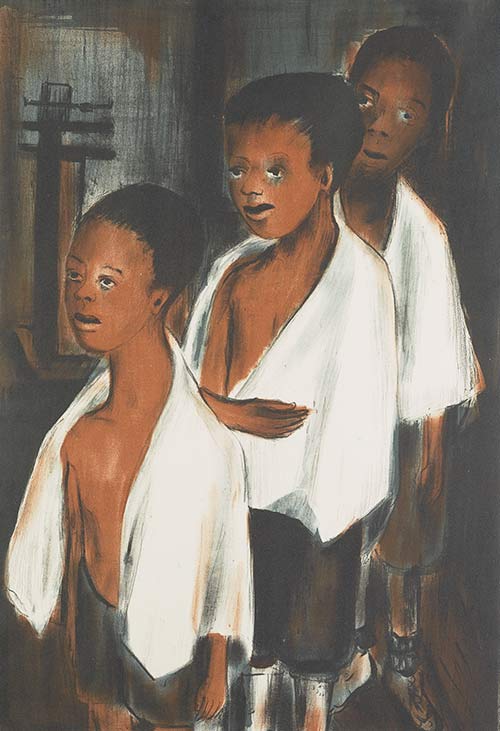
Lefferts
103-34 Lefferts Boulevard, Richmond Hill
Waiting for the Doctor (1935-1943)
Riva Helfond
Three young children dressed in white tops waiting to see a doctor. A doctor’s scale is visible in the background.5
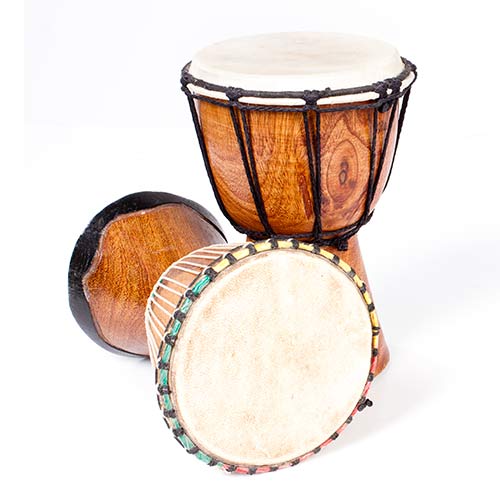
Lefrak City
98-30 57 Avenue, Corona
Djembe
The djembe drum originated in West Africa, dating back to the 12th century. It is traditionally constructed using a single piece of hardwood which is then topped with animal skin. For its size the djembe is comparatively loud, so in the past it has been used as a way in which to communicate over long distances. The djembe is used in many different types of celebrations and gatherings – its name actually comes from the saying “everyone gather together in peace” in the Bambara language.
Source: Albany Public Library Foundation
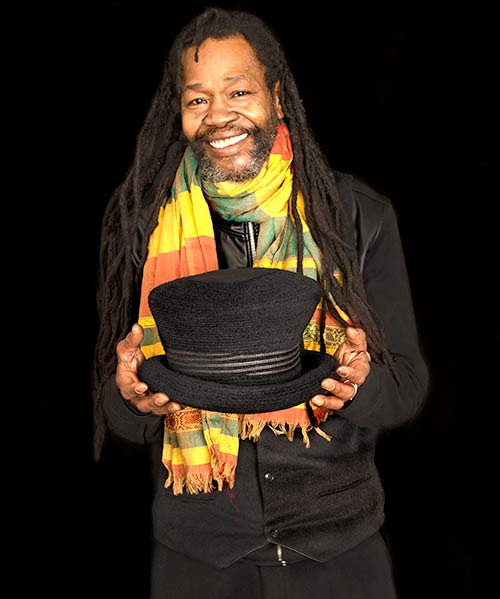
Long Island City
37-44 21 Street, Long Island City
What We Bring: Needle and Hat
Marcus Malchijah
“It was very serendipitous, the way I fell into millinery after my son passed away. It always worked in miraculous ways for me. Many times I reflected that it was a gift given to me by my son.”9
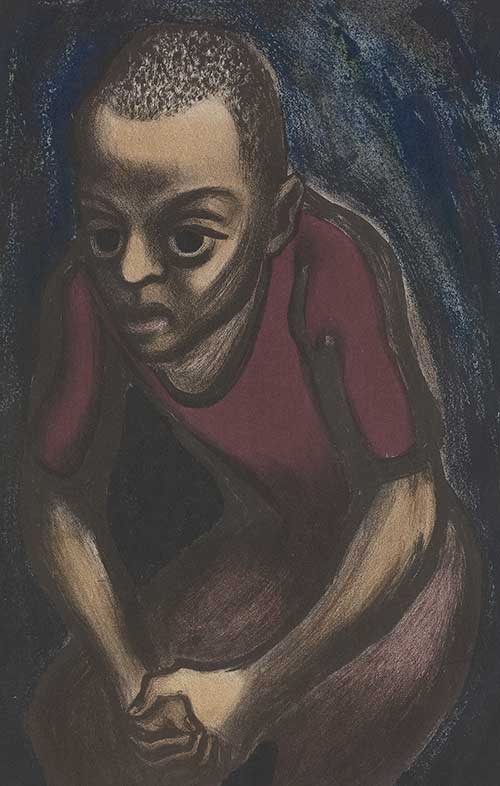
Maspeth
69-70 Grand Avenue, Maspeth
Sam (1937-1942)
Joseph Leboit
Young boy with big eyes seated and holding his hands together.1
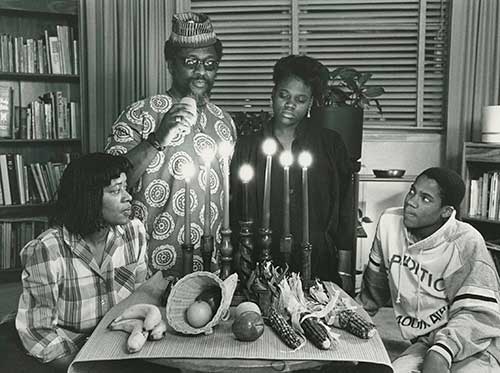
McGoldrick
155-06 Roosevelt Avenue, Flushing
Untitled
John Watusi Branch celebrates Imani, the last evening of Kwanzaa, at home with his family, 1988.8
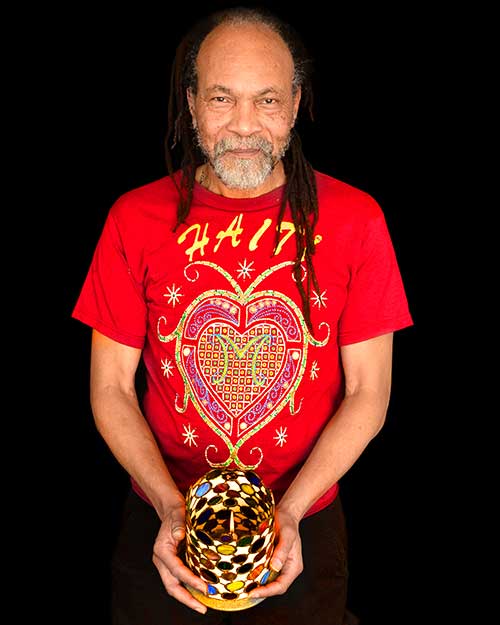
Middle Village
72-31 Metropolitan Avenue, Middle Village
What We Bring: Stained Glass Lamp
Kesler Pierre
“Stay strong, don’t get weak!”9
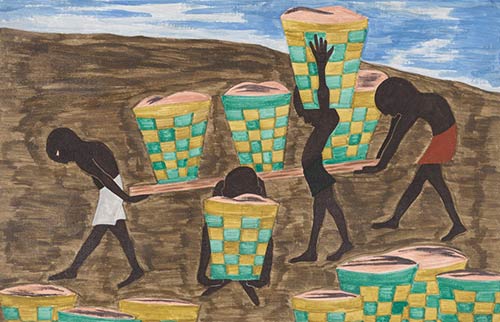
Mitchell-Linden
31-32 Union Street, Flushing
The Migration Series Panel 24 (1940-41)
Jacob Lawrence
This is a panel from Jacob Lawrence's Migration Series. The caption reads, "Their children were forced to work in the fields. They could not go to school."
Almost 80 years ago, young artist Jacob Lawrence set to work on an ambitious 60-panel series portraying the Great Migration, the flight of more than a million African Americans from the rural South to the industrial North following the outbreak of World War I. Before painting the series, Lawrence researched the subject and wrote captions to accompany each panel. Like the storyboards of a film, he saw the panels as one unit, painting all 60 simultaneously, color by color, to ensure their visual unity. The poetry of Lawrence's epic statement emerges from its staccato-like rhythms and repetitive symbols of movement: the train, the station, ladders, stairs, windows, and the surge of people on the move. Following the example of the West African storyteller, who spins tales of the past that have meaning for the present and the future, Lawrence tells a story that reminds us of our shared history and at the same time invites us to reflect on the universal theme of struggle in the world today.
Source: The Phillips Collection phillipscollection.org4
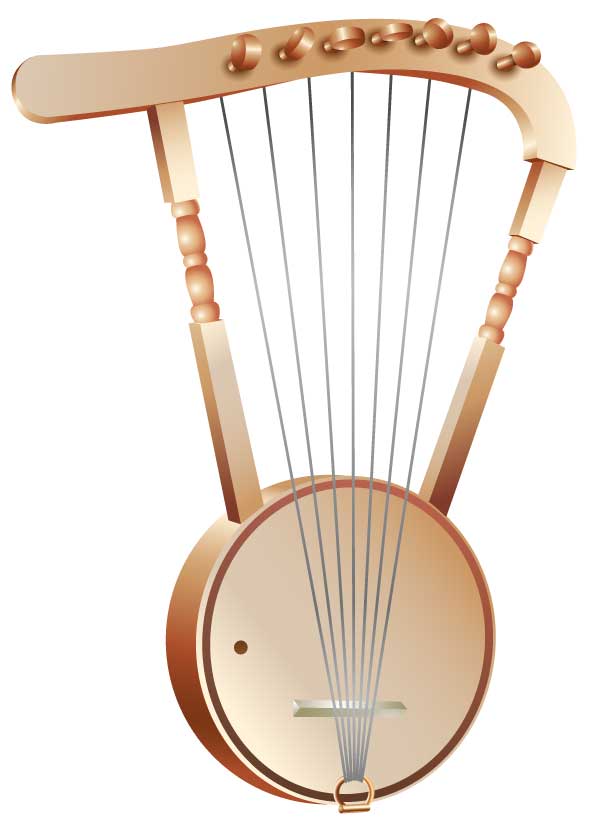
North Forest Park
98-27 Metropolitan Avenue, Forest Hills
Bowl Lyre
The lyre is a stringed musical instrument having a yoke, or two arms and a crossbar, projecting out from and level with the body. The strings run from a tailpiece on the bottom or front of the instrument to the crossbar. Most lyres are plucked, but a few are bowed. Bowl lyres have a rounded body with a curved back—often of tortoiseshell—and a skin belly; the arms are invariably constructed separately, as in the Greek lyra.
The lyres of modern East Africa probably reflect ancient diffusion of the instrument via Egypt. African bowl lyres vary from the Ethiopian masonquo and krar to the ndongo and odi of Uganda and similar instruments in the Congo region. In some cases the sound is made to buzz either by running the strings close to the skin or by placing a rattling object on the skin under the strings.
Source: Encyclopedia Britannica
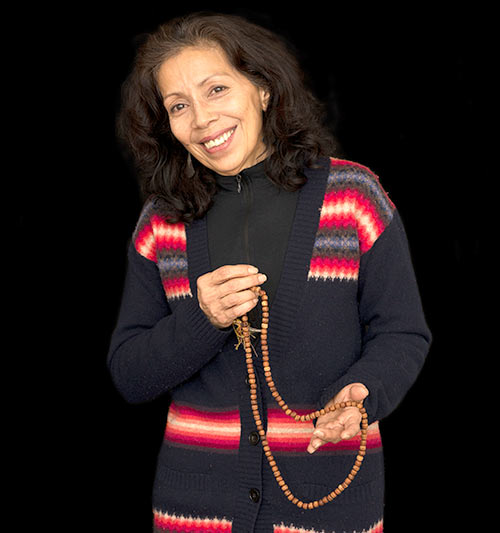
North Hills
57-04 Marathon Parkway, Little Neck
What We Bring: Mala Prayer Beads
Pritha Singh
“These represent truth, consciousness, and bliss.”9
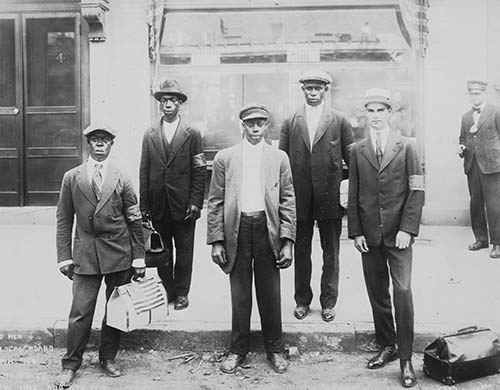
Ozone Park
92-24 Rockaway Boulevard, Ozone Park
Untitled
Five draftees on a street in Jamaica, Queens, prior to boarding LIRR to Camp Upton, August 5, 1918.11
1 Courtesy of the Fine Arts Collection, U.S. General Services Administration Federal Art Project NYC WPA. On extended loan to Queens Library. Contact digitalarchives@queenslibrary.org for research and reproduction requests.
2 Courtesy of the Fine Arts Collection, U.S. General Services Administration New Deal Art Project. On extended loan to Queens Library. Contact digitalarchives@queenslibrary.org for research and reproduction requests.
3 1940–41, Casein tempera on hardboard, 12 x 18 in. The Phillips Collection, Washington, DC, Acquired 1942. phillipscollection.org.
4 1940–41, Casein tempera on hardboard, 12 x 18 in. The Museum of Modern Art, New York. Gift of Mrs. David M. Levy.
5 Courtesy of the Fine Arts Collection, U.S. General Services Administration New York City WPA Art Project. On extended loan to Queens Library. Contact digitalarchives@queenslibrary.org for research and reproduction requests.
6 Courtesy of the Queens Library, Archives, Storefront Museum Collection.
7 This replica of Augusta Savage’s The Harp is part of the Langston Hughes Community Library’s Black Heritage Reference Center.
8 Harvey Wang, Courtesy of the Queens Library, Archives, Queens Council on the Arts Collection. Copyright: Harvey Wang.
9 Courtesy of City Lore, What We Bring: Immigrant Gifts exhibit, on view at Central Library until March 2. Cosponsored by City Lore, Center for Traditional Music and Dance, the Brooklyn Arts Council, and the CATCH consortium. Curated by Tom Van Buren and Steve Zeitlin. Funded by the Andrew W. Mellon Foundation with additional support from the New York State Council on the Arts and the NYC Department of Cultural Affairs. Photography by Tom Pich.
10 Queens Library, Archives, Queens Borough Public Library Photographs.
11 Courtesy of the Queens Library, Archives, Frederick J. Weber Photographs. Copyright: Estate of Frederick J. Weber.